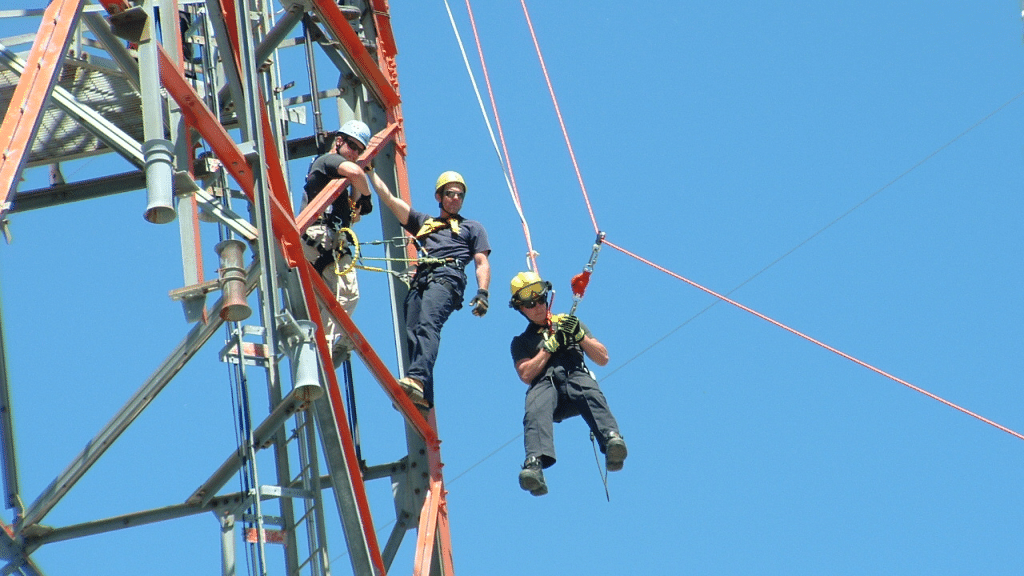IFSJ Exclusive: Ready for anything with FIREWISE Training and Consulting
- May 15, 2023
- 7:00 am


Iain Hoey
Share this content
Michael Cadotte, President at FIREWISE Training & Consulting, talks NFPA fire training
What is your professional background?
I spent 30 years as Senior Fire Officer in an urban area. I spent much of the latter part of my career as Incident Commander. I was also Programme Manager in local fire college for 15 years where I implemented fire training programmes through the NFPA at the local fire college.
What is Firewise?
We are a health and safety company that focuses on more advanced areas of fire training. We also have confined space rescue teams, high angle rescue teams, and emergency response teams that are contracted out to private companies all over the world.
NFPA training has been a focus for Firewise, especially internationally, because there was a gap in training standards. We’ve opened a branch in Abu Dhabi and our focus in that area is oil and gas, all based on NFPA training.
Firewise has expanded into all that sort of training all over the world, but NFPA training has been our focal point. We also have consulting services which can help fire brigades and fire services deal with internal structure. We do risk management consulting based on NFPA standards. There is always a standard that we can fall back on. We’ll do risk management, fire audits, and NFPA audits for companies.
We get to know clients who are happy to pick up the phone and give me a call. Advice is free- it’s easy to answer a question in five minutes that could take you days to find the answer to. That’s part of the package we deliver.
What benefits does training offer?
No two calls are the same. Because of the lack of frequency of emergency calls, without training, the skills are just not there. The requirement for muscle memory, especially in practical settings such as firefighting, is critical. Training is the only way that you’re going to achieve that. It’s not going to be training on the fly.
Training is critical across the board, particularly in a profession as hazardous as firefighting where any wrong move can cause injury or worse. In a firefighting environment where time is of the essence, if you haven’t trained for a situation multiple times you’re going to forget everything in the heat of the moment.
What types of training does Firewise offer?
Our focus is NFPA standards, but that covers basically everything. Every type of training is in there from NFPA 1006 confined space high angle rescue to industrial fire brigade training. My area of expertise is fire command training and instructor training.
Anything that falls under any of those categories, we can fall back on the NFPA standard, deliver certification and thus meet a known standard. That’s the way we deliver it: based on a set curriculum.
Are there any key training programmes you would like to highlight?
NFPA 1072 hazardous materials training – any incident involving fire becomes a hazardous material incident. In the Middle East, general plants are always looking to have rescue teams trained in confined space high angle rescue.
I always go back to basic firefighter training – sometimes we evolve into so many different areas that we forget the basics. Basic training is still critical. Finally, officer training: making sure you have competent people that are leading the group.
What recent developments have impacted the training sector?
The fire service has always been reactive rather than proactive, unfortunately. Since 9/11, the focus on hazardous materials in the NFPA standard added weapons of mass destruction. I know it’s 20 years ago, but even since that time, you see for more incidents that lend themselves to hazardous materials training, and that’s not just in the US – it’s international. Responders need to have that training background, they need to be prepared.
Another is around building construction. Depending on where you are, building construction is changing. If you look at the flammable cladding of the high-rise buildings, there has been so many instances in the US, Great Britain, Dubai. You’ve seen multiple different evolutions in construction methods that has made the fire service evolve. You need to deal with that change.
Today you’re dealing with more evolved equipment and, hopefully, better trained firefighters. But ultimately, your approach to these fires as an incident commander is critical. The job of commander is to make sure everyone goes home at the end of the day. Understanding the buildings, understanding the types of fires, and understanding what’s going on as a commander has significantly changed in the last 30-40 years.
Why is training critical?
I don’t profess to be an expert in everything and nor should anyone. I have specialists in every field that we deliver training in. I deliver the more advanced ones, but when it comes to some of those practical components such as high angle rescue, I have other experts that will deliver that training.
Even like our confined space clinical rescue teams that we bring to sites – in some industry they think they can handle it all themselves, but ultimately, at the end of the day, no one is an expert in everything.



